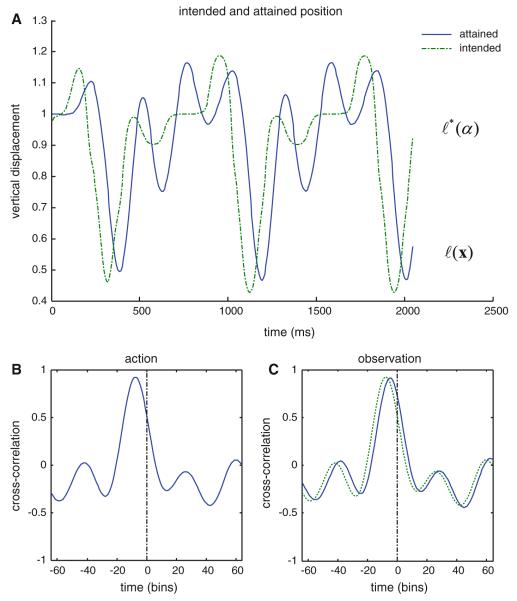Fig. 3.
This figure illustrates how conditional expectations about hidden states of the world antedate and effectively prescribe subsequent behavior. a shows the intended position of the arms extremity. This is a nonlinear function of the attractor states (the expected states shown in Fig. 2). The subsequent position of the finger is shown as a solid line and roughly reproduces the expected position, with a lag of about 80ms. This lag can be seen more clearly in the cross-correlation function between the intended and attained positions shown in b. One can see that the peak correlation occurs at about 10 time bins or 80 ms prior to a zero lag. Exactly the same results are shown in c but here for action–observation (see Fig. 5). Crucially, the perceived attractor states (a perceptual representation of intention) are still expressed some 50-60ms before the subsequent trajectory or position is evident. Interestingly, there is a small shift in the phase relationship between the cross-correlation function under action (dotted line) and action observation (solid line). In other words, there is a slight (approximately 8 ms) delay under observation compared to action, in the cross-correlation between representations of intention and motor trajectories

